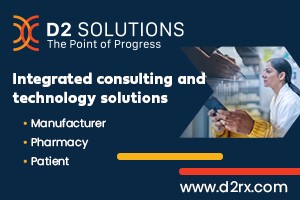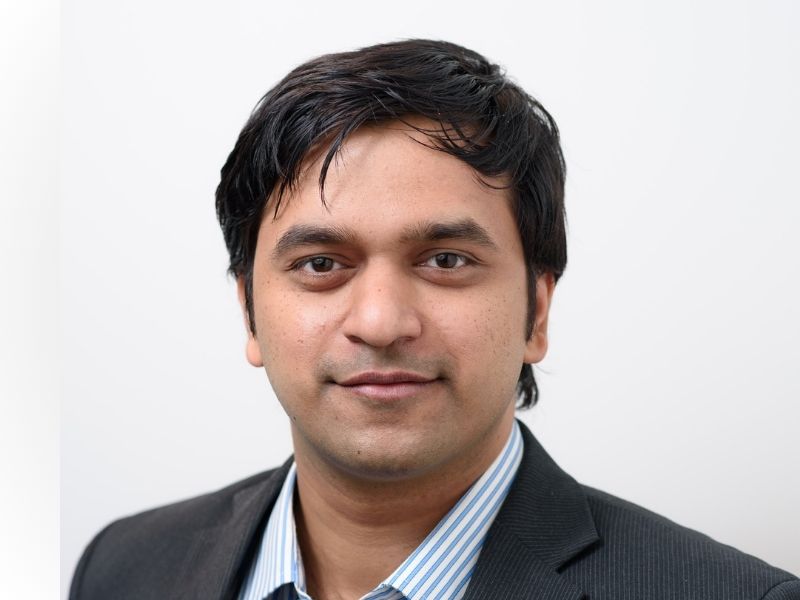In this article, we discuss the possibilities and prospective outcomes of good policy making by governments, NGOs and CSR organizations to bridge the gap between rich and poor in accessing healthcare by people in developing countries with connected digital health and innovative models for economic growth that is sustainable and scalable.
IOT, Digital health and AI contributes to building the system in a robust model where the common man gets benefited with access to health especially those who are in rural areas and semi-urban areas and the people can get affordable treatment with good policy making of self sustaining business models, regulating the pharma-industry, healthcare industry and ensuring to replicate the models of franchise for outreach in low resource setting using geospatial satellite technology to track the people living in low-income. Digital and Data Driven Connected City planning which is convenient for citizens to get first hand treatment at affordable healthcare cost and provide medical camps to people living near CHS, PHS and sub-centers with existing NGOs, CSR, State and National Governments to provide vaccination and medication to patients during outbreaks, epidemics and pandemics that can save millions and billions of dollars to save the economy of the developing countries using technological innovations with data driven approach.
Using AI based data analytics platforms for early detection of corneal disease such as keratoconus can be effective in the market through the SAAS model. Besides, this cloud based analytics platform can be sold to doctors, ophthalmologists which can create huge impacts among researchers such that they can come up with more robust algorithms. Innovations can create huge impacts in the Bottom of the Pyramid level across the globe especially in the regions like Africa, Bangladesh and North East India.
Healthcare is the most important factor for a country’s economic growth. Most of the people living below the poverty line in the developing and under-developed countries have issues with accessing healthcare and are not able to afford high treatment costs. The people categorized in the Bottom of the Pyramid and lower middle-class people, especially in the most populated countries such as India have huge challenges in making the healthcare system accessible and affordable for all its citizens. Unemployment is one of the major reasons for the lack of economic growth in countries and this is amplifying the issue of access to healthcare. Governments need to implement good policies in order to ensure everyone gets quality healthcare at an affordable price. Due to various complexities involved in the economic development of a developing country or underdeveloped countries, it is important that a good business model and framework is established to create strategic partnerships between Private institutions and Non-government organizations or humanitarian organizations for building resilient communities, self-sustaining and scalable models that aids people in living in distress or in need. This will eventually ensure that people living in the peripheries get access to healthcare, education and employment with strategic business models between governments, private organizations and NGOs. The Private organizations will always look for high return on investments and there is need for more studies to be done to understand better business models frameworks to establish and introduce necessary action plans between the stakeholder. For example, MSF (Doctors without border ) is an humanitarian organization that works independently all over the world to serve people with medical aid, shelter, food and sanitation for the affected people by conflicts, wars, natural and man-made disasters, epidemic outbreaks and so on. In a developing country such as India, due to over-population and thousands of social problems involved, it is not easy for the governments to ensure proper healthcare, education and development of the country. There is more strategic policy making, strategic partnerships between stakeholders to ensure the growth of the nation and building sustainable solutions with innovation, technology, good governance and capacity building. The need for identification in the complex ecosystem in developing countries is one of the core challenges for economic development. Innovation plays a major role bridging the gap between poor and rich, where there is a huge disparity and distribution of food, water and money is uneven. Developing a deep understanding of people’s needs is the starting point of any invention process.
The NGOs believe the people who face challenges in the field are those with the key to the solution. However, the NGOs struggle to identify needs properly in humanitarian operation due to various reasons. How can the Governments, NGOs, Private companies address this challenge and what identification methods that suit humanitarian innovation and economic development.
There is a need for collaboration between these stakeholders in order to make the world more economically stable and solving the crisis due humanitarian issues. Innovation enables better, more and cheaper humanitarian assistance and increases the economic stability of a nation. However, Non Governmental organizations alone cannot innovate. Large corporations in the name of CSR spend some money for social causes, however that is not enough considering the amount of trillions of dollars required for solving the issues in the grassroot and local level in the economically backwards and developing countries. Some social entrepreneurs aim to solve problems focusing on humanitarian crisis economic development, building sustainable and resilient communities for a better future. Policy makers need to rethink the best ways the humanitarian/non-profit organizations collaborate with the private sector and governments. For example, according to UNICEF, every 20 seconds a child dies due to Pneumonia and mostly under the age of 5 years old. If there is a collaboration between NGOs, social enterprise exists and if it is supported by Governments, then they could work together to bring the technology with innovative solutions making equipment more portable, affordable and at the same time using mass distribution of vaccines through NGOs would save a lot of people’s lives. Economic development will then happen when people get access to education through the internet, schools and college. However, the primary goal should be to ensure the preventable mortality due to illness and preparedness for acting on disaster to stabilize the situations such epidemic outbreaks, pandemics. For example, due to various issues in the Google maps accessibility in the rural and periphery areas around the world, it is very difficult for the NGOs such as MSF to act alone and distribute the vaccines to the people all over the affected areas such as the Ebola outbreak in West Africa. In these scenarios, Innovation plays a huge role in helping humanitarian processes ease. Some of the volunteers have built a platform called missing maps at MSF in order to plot the buildings, roads, lakes, rivers etc from Satellite images, in order to make sure that the relief materials such as food, vaccines are delivered to everyone in need. Due to lack of infrastructure in developing countries, patients do not get access to healthcare at the right time especially during emergencies such as trauma injuries and other health conditions which leads to mortality and morbidity of patients. One doctor for 1700 people in India is the current state of scenario. There is probably one specialist for 20,000 people. With a rising burden of patients in the country with lack of effective treatment and management of diseases, there are a decreasing number of doctors due to which it gets more challenging for the governments to address the issues in healthcare and people not getting access to healthcare. Technologies such as AI, Machine learning and Deep learning can play a huge role in automating the processes of screening, early diagnosis and therefore leading to accelerating therapies. Augmented reality can play a huge role in remote surgeries, when surgeons are not available on the site where the patient resides due to various reasons.
A nation’s socio-economic can be improved with better and equal access to healthcare for all and leading to literacy and thereby impacting millions’ current and next generation families to pursue education with which creation of jobs and employment will be ensured. One of the examples is that Eye diseases and conditions leading to visual impairments and blindness in developing countries like India. India has the highest number of blind people in the world.
There are only 45,000 optometrists in India, when there is a requirement of about 1,25,000 optometrists for the country’s population and leading to severe handicaps on early screening of children. Primary healthcare is something, the country falls short at the moment. There is a need for emphasis on screening the rural and underprivileged as the country is the second most populous country in the world and has a tremendous unmet need for ophthalmic care. India is home to 18 percent of the world’s population and approximately 30 percent of the world’s blind people. Corneal blindness is the second major cause of blindness in the world and most of the Corneal blind people live in India. Around 75% of these cases are preventable, if the patients are diagnosed and treated earlier. There is a need for corneal donor tissues and the supply of it is not enough to fulfill the existing population of blind people in India. It is important that with technology such as Artificial Intelligence, it is possible for eliminating the need to avail corneal donor tissues someday by preventing disease progression using various interventions in technology and with early stage diagnostics and accelerating therapies in accomplishing democratizing Eye care in India and Globally as well.
New Research ideas and methodologies in using AI, machine learning algorithm approaches in tackling corneal blindness for detection of diseases such as Keratoconus etc in building topography imaging devices for detecting corneal abnormalities which works on the principle of pattern detection. An AI and Big data based healthcare solutions platform with the vision to cure diseases which are all preventable, while providing affordable and accessible healthcare solutions. Using AI, big data technologies to solve problems in Eye care, but also in other areas of healthcare as well such as Cancer, Tumor, heart diseases, chronic diseases and other prevalent diseases which could be prevented if there is strong intervention of AI in automating the processes giving great insights for doctors to help them understand in interpretation at high accuracy and facilitate in accelerating therapies.
There is a great opportunity in applying Deep learning algorithms, imaging solutions for better interpretation of diseases and this could revolutionize and democratize healthcare in India and globally considering the efficiency and amount of specificity it could provide.
Considering the amount of complexities in healthcare, it is important for us to understand the scenarios with proper clinical support, expert advice while building AI products for healthcare solutions and also emphasize on the usage of the various algorithms in machine learning, deep learning such as Reinforced learning algorithms, Reinforced CNN algorithms and other algorithms which are basically used at various use case scenarios. It is not something you use only a specific algorithm, but a combination of algorithms at various scenarios. Annotation and verification is very much essential in dealing with large data sets of medical images for training of the AI Platform and optimizing things over the time.
One of the things that is important to get access to eye care is that in reaching the masses all over India by basically building a strong AI platform driven by algorithms which could automate the processes of early screening of patients for retinal, corneal diseases and other disease diagnostics through clinical support from secondary, primary hospitals and with NGOs by visiting schools, hospitals, colleges, universities, and public van/bus to provide free or low cost eye screening and diagnostics for public.
Google had been working on AI based applications for Diabetes Retinopathy which could be a breakthrough in solving diabetes related eye disease problems. Eye health is the most important factor in economic development and also it is a window for prognosis and diagnosis of many medical conditions.


